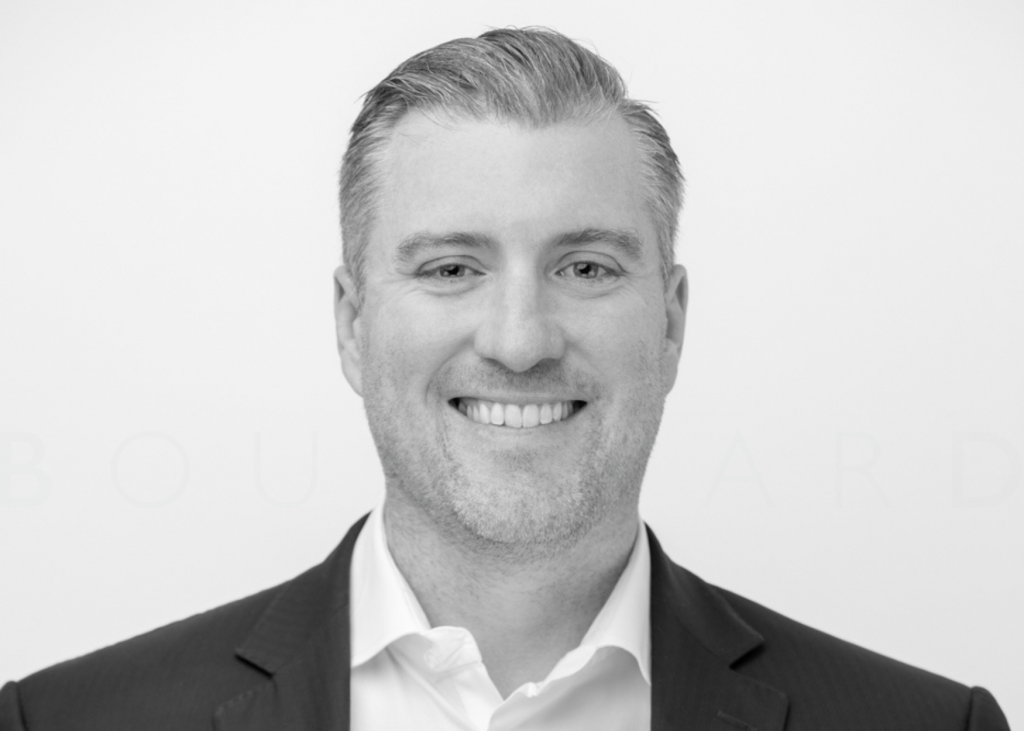The interview: Andrew McVeigh, founder of Remara, on business origins, asset management and future vision
Andrew Mcveigh, the founder and managing partner of Sydney-based asset manager Remara, talks through the initial spark for the business, its path to managing in excess of A$1.7b in assets, and his vision for the future.
Boulevard: What was the motivation to launch Remara – where did you see its point of difference and how it would add value to the landscape
Andrew McVeigh: I think the genesis of Remara really started a few years back when I was at Brookfield Asset Management, which is a Canada-based organisation, global asset manager and allocator. They were big into real estate, infrastructure assets and private equity, and I was there for 10 years as CFO of real estate, private equity, and corporate operations for Asia-Pacific. During that time, I got to see a lot of different things in the landscape, and to participate in different transaction structures. And I think the one key thing I saw, was that there are tremendous investment opportunities available, but as a staff member, I didn’t have a level of access to be able to go into those investments, because they were just for institutions. So that got me really thinking about the opportunity set for people outside of this institutional world. As I started to build my own world through that job, I was looking at the things I can invest in and how to do it. And I didn’t see the same opportunities or offerings as what I was seeing internally in the organisation, which was a bit of a spark.
There needs to be an opportunity set there available for everybody – that has similar investments – and that’s really where Remara sits today. The thesis of the organisation and what we ultimately want to achieve, is a level playing field for all investors, so everybody gets access to institutional-grade investments. And then, on top of that, we can create tailored solutions and structures for HNW and UHNW people, where you’ve got the same base-level investment class that everybody gets access to.
However, I believe many investment and asset managers today approach it differently, often thinking, ‘I’m a credit guy, I like investing in credit, so I’ll just continue doing that and create a fund for wholesale or HNW individuals.’ This approach isn’t truly bespoke and doesn’t cater to everyday Australians. It’s more about the manager wanting to buy assets, rather than focusing on the investor’s needs.
What we’ve done differently, is to focus on generating assets, investing in businesses for the long term, and being long-term allocators of capital. This allows us to create opportunities that everyone can participate in. For HNW individuals, we offer bespoke investment notes, additional leverage, and different return profiles – but everything is built on the same underlying asset class that everyone has access to.
This approach has resonated well with institutions, family offices, and HNW individuals, but also with retail investors, who are often left out of these conversations. Our goal is to provide institutional-quality investment opportunities to everyone, while also offering the flexibility that HNW individuals and family offices seek, such as customised return profiles, the ability to adjust risk or liquidity, and tailored structures to meet their specific needs.
Blvd: How has it evolved since you started? What’s gone to plan – and what surprised you?
McVeigh: There have been a number of surprises along the way. It’s a rapidly growing business, which is exciting, but it also means that things don’t always go as planned. When we first started, our focus was on building a credit-based business with assets that generate yields, creating investment products for people. Now, we’re seeing new opportunities emerge in niches like real estate, technology and tactical investments. These areas are still closely aligned with what we do and know, but they’re slightly different investment classes we didn’t initially plan to explore.
We’re now able to create opportunities that blend different asset classes. For example, combining tech investing with credit investing offers the potential for dividends, liquidity, and the upside of venture capital or tech-style investments. So we’re starting to see an evolution in how we can mix and match different asset classes together to create bespoke products. And that probably is the backbone of the business – owning assets and owning businesses that generate assets. Now that we’ve built that foundation and continue to expand, it gives us incredible flexibility.
This approach sets us apart from other investment managers who rely on the market to generate assets for them to buy. We are generating our own assets daily, giving us a unique edge. This not only provides us with greater flexibility but also allows for a much longer-term horizon in terms of the assets we want to establish, the structures, funds and programmes we aim to implement, and how we plan to deliver growth for our investors – and ourselves.
Combining tech investing with credit investing offers the potential for dividends, liquidity, and the upside of venture capital.
Some key things that have gone well include our fund platform and credit businesses. It’s certainly taken us a little bit longer to start than we thought, because I think we underestimated how hard it is to actually generate credit contracts on a daily basis. But all of those learning experiences have really moulded us into a pretty resilient business, and what we essentially do is, we’ll create a series of plans and get to action straight away. There’s no point in over-planning, as things rarely go as expected. We aim to get 80 to 90 per cent of the way with a plan, and then start implementing. Once we begin, we gather feedback, make adjustments and keep moving forward. The key takeaway has been the importance of being proactive in implementing and adjusting based on feedback. If something isn’t working, we don’t linger on it. We cut it, figure out why and create a new plan.
Blvd: What would you say your UHNW or family office clients are looking for? Why do they come to you?
McVeigh: We have a very stable underlying investment platform, particularly on the credit side. We’ve created a broad range of opportunities across various types of credit, and then we’ve tranched the capital stack. This means that investors and family offices can approach us with different needs. For example, some may say, ‘I want access to a steady income yield, but I also need liquidity.’ Or, ‘I want to be able to liquidate quickly, whether monthly, quarterly, or within 48 hours.’ On the other hand, some investors might have cash and are seeking yield, but want to avoid equity market risk, especially if they’re already over-weight in equities. Many investors are also heavily invested in property, so they may be looking for alternatives. These investors may not have the expertise to navigate the credit market on their own, but they still want yield – ideally a 15 to 20 per cent return with credit. These two scenarios represent the opposite ends of the spectrum that we are seeing.

Andrew McVeigh, founder of Remara
Another one is more about your generational wealth, protecting that wealth and providing a steady income stream. That means you can take those riskier opportunity sets because you know you’ve got income, and you know your family’s taken care of. The other scenario is looking into outsized opportunities that are uncorrelated to everything else in their portfolios, because they already have a steady income stream. So I think we’ve had a lot of success on both ends of that spectrum.
What we tend to find is, we’ve got a couple of family offices through Asia and Singapore in particular, and they’re looking more for that high growth. Now, we’re starting to get a few more Australian family offices, who also want high-growth opportunities instead of correlated risk to equities or real estate. That’s where the credit platform and offering comes into it: with five portfolio companies that originate credit, we can meet the unique needs of any family office, starting from as low as A$10,000, and up to $1 million on an individual note or fund basis – similar to a private placement, which is typically reserved for larger ticket deployments (usually $50 million or more for institutions).
And again, this approach is not widely available in the market – especially with our model, which includes risk retention and skin in the game. Our investors know that we’re the first to absorb losses if there’s underperformance in the credit pool. Family offices, particularly, resonate with this, because it’s like, ‘Your hands are in the coal bag, just like mine. I know you’re backing your own ability, taking the same risks, and you’re invested in the outcome.’
We’re the first to absorb losses if there’s underperformance in the credit pool. Family offices, particularly, resonate with this.
Blvd: How has the private wealth landscape changed over the years – what trends have you seen, and where are we heading?
McVeigh: I’m still relatively new to the private wealth space – it’s only been in the last five to six years that I’ve become involved in private wealth, so I’m looking at it from a different lens, and I think that provides a bit of benefit.
What we’re seeing overall, is the Australian market becoming more and more sophisticated. Credit as an asset class is growing substantially, with around 300 credit funds in Australia alone. However, the challenges we’re seeing is that, while there’s a large influx of capital into credit, the underlying strong credit assets needed to support all of these managers and investors are limited. So picking the right manager is very important – picking managers that have that skin in the game, particularly on credit, because credit as an asset class is skewed towards the downside. What I mean by this is that when you lend $100 out on a 10% return, the most you’ll make is your $100 plus your $10, for a total of $110. But there’s also a chance that you could lose the entire $100. Therefore, it’s essential to choose managers who have aligned interests and a proven track record, like we do, to provide a stable platform.
What we’re starting to see in the private wealth space is people are understanding how credit can form a strong part of an underlying investment portfolio, and there’s more sophistication coming in terms of that portfolio construction. Credit offers consistent income, limits downside risk by sitting in a more secure portion of the capital stack, and provides a solid foundation for investment portfolios. The challenge, particularly in Australia, is the lack of a large public market for bonds and fixed income, which makes credit a less familiar asset for many investors.
To this point, we’ve had a relatively young investment lifecycle, with a focus on wealth accumulation. However, as a nation and population, we’re starting to age, which means people are looking to take on less risk, seek more income, and gain better access to liquidity. This is where credit can play a crucial role, providing a solid foundation for anyone’s portfolio. Building a portfolio is like building a house, right? You don’t build a house on a poor foundation. We see credit as providing a good risk profile, it’s got great income, it has very low capital volatility, and that allows you to make different decisions through the residuals of your portfolio. But it also means that you’ve got access to cash when you need it.
Blvd: Has there been a change in how individuals approach investment, looking not only at returns but also at values? And for you, yourself, both in leading Remara but also as an investor, how do you derive your passion or fulfillment?
McVeigh: There has been a lot of talk about green and social investing, but the biggest challenge we see is that much of it remains superficial. Everyone wants to earn the same returns, while also ticking the green or social boxes. However, when you’re building markets like green energy or social investment, you can’t expect those same returns. You have to give something up. We haven’t yet seen investors willing to make that trade-off. There’s still work to be done in this space, and government support is likely needed to help establish industries and investments.
We have a transaction with the Australian Office of Financial Management in one of our portfolio companies. Their mandate is to grow capital markets in Australia, particularly in certain loan types for securitised credit. We have a facility with them, where they’re investing in us while we build certain products. It’s a mutually beneficial arrangement, and once completed, we will have established a strong market that offers competitive returns while also addressing social and environmental goals.
We also have a joint venture with a First Nations business – we wanted to create a business that wasn’t reliant on government handouts or support from industry, but rather, one that could be self-sustaining in the long term. At the same time, we wanted to provide opportunities for First Nations people to access areas like investing, credit and insurance – sectors that are traditionally difficult to enter.
There has been a lot of talk about green and social investing, but the biggest challenge we see is that much of it remains superficial. Everyone wants to earn the same returns, while also ticking the green or social boxes.
The business essentially provides loans to middle markets, corporations and multinationals, not loans directly to First Nations people. So First Nations people with secondary and tertiary educations who want to get access to those vocations can come into the business, get trained up, work through that business and get great skills through that. And then the second component is, we’ve mandated 70 per cent of the profits into a social account. That social capital account then has entrepreneurial programmes to be able to build up entrepreneurs – like a 12-week mini-MBA. Once they progress through that, they’re then eligible for a VC- or PE-style grant, and they get support from us from an accounting and a legal perspective.
This approach allows us to take a long-term view, creating sustainable change that can be measured over generations. The challenge with government initiatives is often short-term thinking, typically focused on the next three years. We wanted to build a platform where people could invest and still achieve commercial returns, while also supporting a social programme that underpins the business. Our concept is about reallocating a share of the wallet, not increasing it. We aim to take a portion of the capital and deploy it more efficiently than traditional government or industry grants. While we haven’t offered a specific social fund yet, it’s certainly on the agenda for 2025 – where investors can take positions and still earn commercial returns while contributing to a broader social impact.
Read next:






